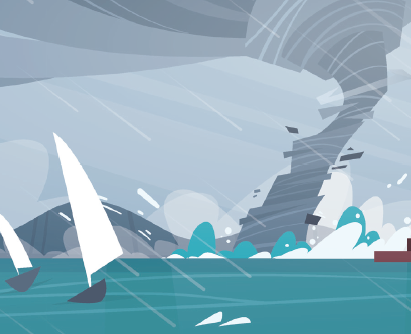FLOODING
1. ____ They occur almost everywhere in the world and cause widespread damage. Scientists have long tried to make their ability to predict floods perfect. So far, the best that scientists can do is to predict the potential for flooding in some conditions. There are a number of conditions: deep snow on the ground and human error are two of them.
2. ____When it occurs together with heavy rain and sudden warmer weather, it can lead to serious flooding. Frozen ground or ground that is very wet cannot absorb the additional water created by the melting snow. Melting snow also causes high water levels in rivers and streams. Whenever rivers are already at their full capacity of water, heavy rains will cause the rivers overflow and flood the surrounding land.
3. ____When ice covering the surface of the river begins to melt, the surface of the ice cracks and breaks into large pieces. These pieces of ice move and float down the river. They can form a dam in the river and block the water flowing. So the water rises and floods the land upstream. If the dam breaks suddenly, then the large amount of water behind the dam can flood the areas downstream too.
4. ____ When a large human-made dam breaks or fails to hold the water collected behind it, the results can be devastating. Dams contain such huge amounts of water behind them that when sudden breaks occur, the force of the water is like a great tidal wave.
Although scientists cannot always predict exactly when floods will occur, they do know a great deal about when floods are likely, or probably, going to occur. Deep snow, ice-covered rivers, and weak dams are all strong conditions for potential flooding. 5. ____

